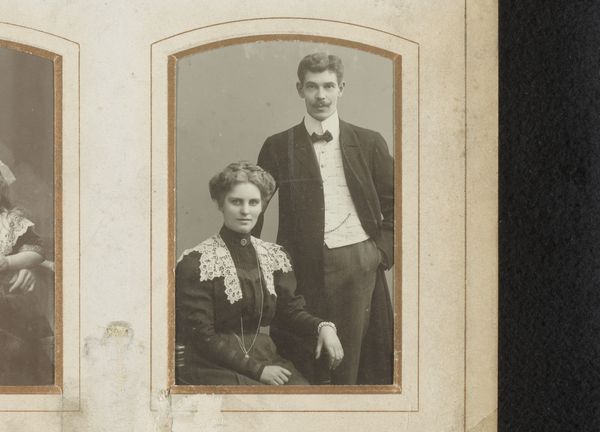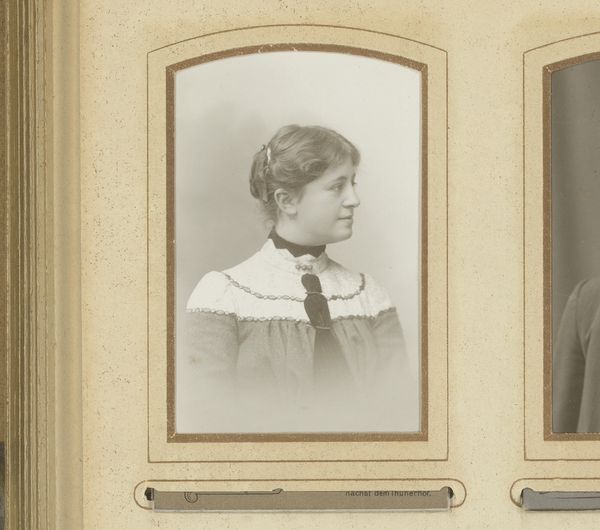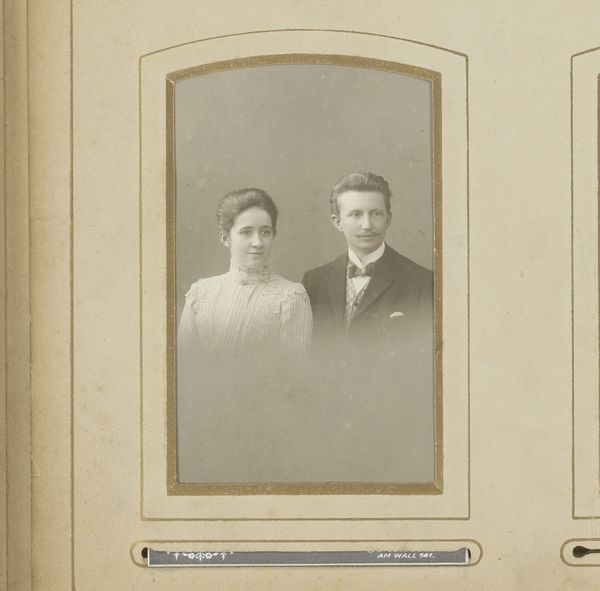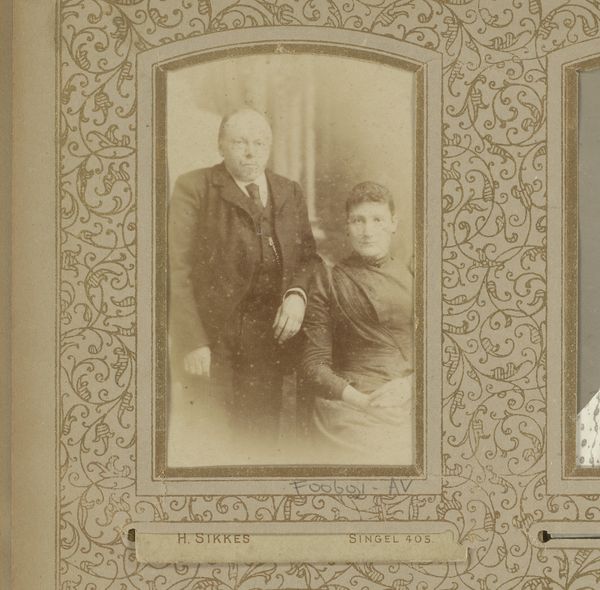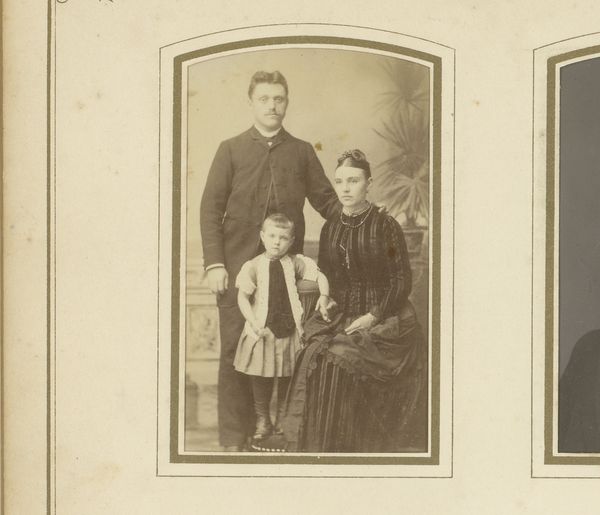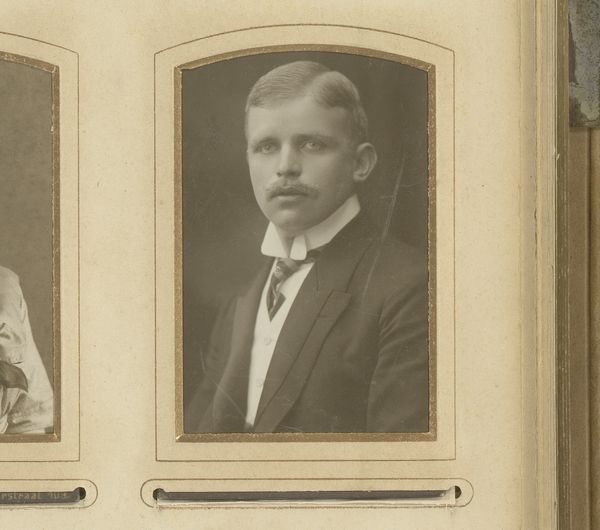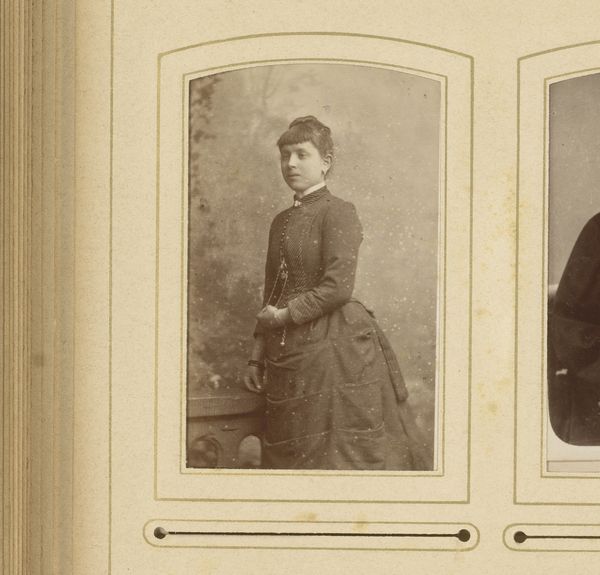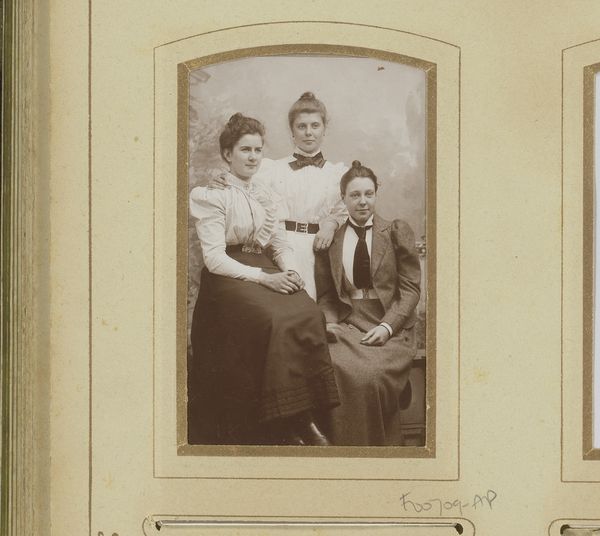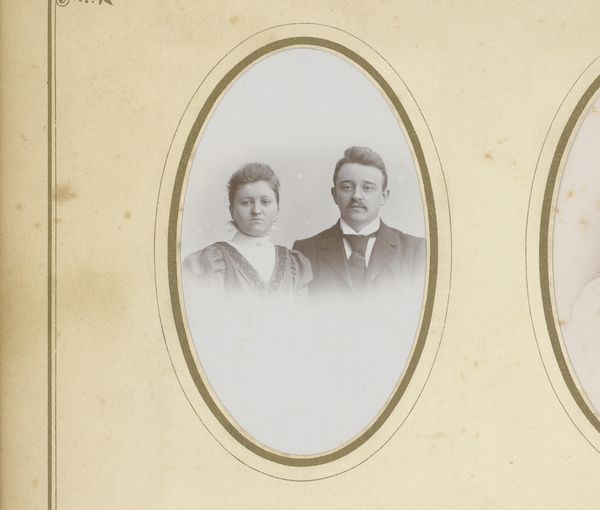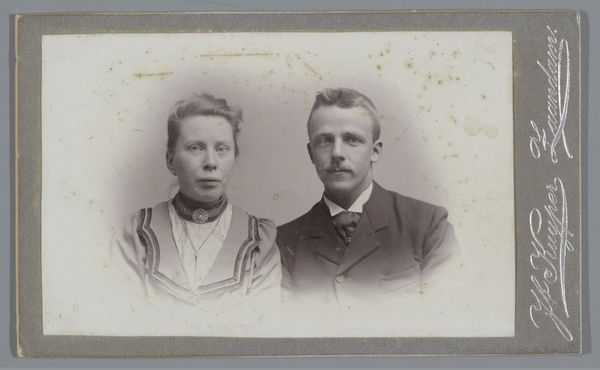
photography, gelatin-silver-print
#
portrait
#
16_19th-century
#
wedding photograph
#
sculpture
#
photography
#
historical photography
#
gelatin-silver-print
#
19th century
Dimensions: height 83 mm, width 53 mm
Copyright: Rijks Museum: Open Domain
Curator: Here we have "Portret van een man en vrouw" (Portrait of a Man and Woman), a gelatin-silver print attributed to Fritz Schweisfurth, and believed to date from sometime between 1890 and 1920. Editor: It’s quite formal, isn't it? A sense of contained dignity. The monochromatic tones, combined with their upright postures, it speaks of a particular class and era. Curator: Absolutely. The clothing and poses speak volumes. The man, in his dark suit, positioned slightly behind, the woman in her high-necked blouse. It adheres to expected gender roles but it goes beyond just their attire, look at their faces: do they hold clues to understand that historical context? Editor: It's striking to think about the actual labour involved. The whole, quite cumbersome, photographic process in this period, the developing of the gelatin-silver print. Each aspect would demand skilled practitioners. And how much does such process define the kind of poses they are adopting here? Curator: Indeed, this wasn't instant gratification. It would take time to have your portrait taken and then printed like this. In a way, that labour and skill involved only reinforced its importance. The clothing itself—that pristine white blouse, or the tailored suit—speak of status and careful construction too. These sartorial codes are fascinating symbols in themselves. Editor: You know, thinking about it in those terms of value creation really grounds it for me. It makes me wonder how such photo would be regarded in our current moment? This image once held significant value as object, a symbol of familial and personal memory—its transformation across different spaces in time is intriguing. Curator: Precisely! It invites us to reflect not just on that initial act of image-making but also about their meaning in relation to cultural memory. This image would communicate values of order, permanence and also maybe ambition. It is frozen as a symbolic representation to be looked at in generations to come. Editor: Well, now when I look at this portrait I am struck with how all the different stages and efforts have produced this image, which now lives in its very unique temporality and status. Curator: Agreed, it has that special layered history of past lives recontextualized in our gaze of today.
Comments
No comments
Be the first to comment and join the conversation on the ultimate creative platform.

